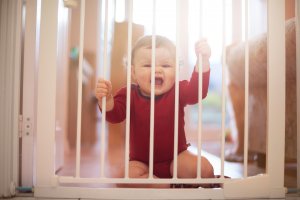Many parents find themselves resorting to yelling when trying to discipline their children, but there are more effective ways to instill discipline without raising your voice. Yelling can damage the parent-child relationship and lead to negative impacts on a child’s mental and emotional well-being. In this blog post, we will explore five proven strategies that parents can use to discipline their child effectively without yelling. By implementing these techniques, you can foster a healthy and respectful relationship with your child while still maintaining discipline and boundaries. 1. Maintain calm and composed demeanor during the conversation. 2. Use positive reinforcement to encourage good behavior. 3. Set clear expectations and consequences for misbehavior. 4. Practice active listening to understand your child’s perspective. 5. Take a brief break if feeling overwhelmed to avoid yelling. 6. Use non-verbal cues like eye contact and body language.
Effective Strategies for Disciplining Without Yelling
Implementing Consistent Routines
While it may seem simple, implementing consistent routines is a powerful tool for disciplining your child without resorting to yelling. Children thrive on routine and structure, so establishing a predictable schedule can help minimize challenging behaviors. Make sure to have set times for meals, playtime, homework, and bedtime to create a sense of stability and security for your child.
Setting Clear Boundaries and Expectations
On the path to disciplining without yelling, setting clear boundaries and expectations is crucial. Clearly communicate your rules and consequences to your child, so they know what is expected of them. Consistency is key; make sure to enforce these boundaries every time they are crossed. This will help your child understand the consequences of their actions and learn to make better choices in the future.
Boundaries: Boundaries provide children with a sense of security and help them understand what behaviors are acceptable. Be firm but loving when setting boundaries, and always follow through with consequences when they are crossed. By establishing clear boundaries, you are teaching your child respect for rules and authority, which is crucial for their development.
Communication Tips for Positive Discipline
Little things like effective communication can make a big difference in discipline. By focusing on positive communication strategies, you can build a stronger connection with your child and guide them towards better behavior.
Developing Active Listening Skills
Now is the time to hone your active listening skills as a parent. To truly communicate with your child, you must listen attentively and show that you understand their feelings and perspective. This will not only make your child feel heard and valued but also help you address the root of their behavior effectively.
Utilizing Calm and Assertive Language
Some parents find it challenging to maintain a calm and assertive tone when disciplining their children. However, speaking in a composed and firm manner can convey your message more effectively. By using clear and assertive language, you set boundaries and expectations without resorting to yelling or aggression.
Active listening involves paying full attention to what your child is saying, both verbally and non-verbally. By actively listening, you show your child that their thoughts and feelings are important to you, fostering a sense of trust and respect in your relationship.
Factors Contributing to Successful Discipline
Recognizing the Role of Empathy
Even in moments of discipline, it is crucial to approach the situation with empathy towards your child’s feelings and perspective. By acknowledging and understanding their emotions, you can effectively address the root cause of their behavior and guide them towards more positive choices. This empathetic approach helps to build trust and strengthens the parent-child bond, fostering a healthier and more supportive relationship.
Building Strong Parent-Child Relationships
Successful discipline is closely linked to the quality of the parent-child relationship. By fostering a strong and positive connection with your child, you establish a foundation of trust and open communication. Building a healthy relationship requires consistent effort, active listening, and mutual respect. Parents who prioritize forming strong bonds with their children are more likely to experience cooperation and respect when enforcing discipline.
- Role-modeling positive behavior
- Spending quality time together
- Communicating openly and respectfully
Perceiving your child as an individual with their own thoughts and emotions, rather than just someone to be controlled, is key to implementing effective discipline strategies. By recognizing their perspective and nurturing a strong parent-child relationship, you set the stage for successful and respectful discipline in the long run.
Additional How-To Tips for Disciplining With Patience
Keep a calm demeanor: When disciplining your child, it’s crucial to stay composed and patient. Take deep breaths and speak in a calm tone to convey your message effectively without the need for yelling. Remember that children pick up on your emotions, so remaining calm can help de-escalate a tense situation.
- Set clear expectations: Clearly communicate your expectations to your child, so they know what is expected of them. Setting clear boundaries can help prevent misunderstandings and minimize the need for discipline.
- Be consistent: Consistency is key in disciplining with patience. Make sure consequences are enforced each time a rule is broken, so your child understands the importance of following rules.
- Practice empathy: Put yourself in your child’s shoes and try to understand their perspective. Showing empathy can help strengthen your bond with your child and make discipline more effective.
Any form of discipline should be done with love and understanding to help your child learn from their mistakes and grow into a responsible individual.
Knowing When to Take a Break
If you find yourself becoming overwhelmed or losing patience during a discipline situation, it’s important to recognize when it’s time to take a break. Stepping away for a few minutes can help you regain your composure and approach the situation with a clear and calm mind.
Encouraging Good Behavior Through Positive Reinforcement
One effective way to discipline your child without yelling is through positive reinforcement. Praise and reward your child when they exhibit good behavior to encourage them to continue making positive choices. Celebrating small victories can go a long way in promoting good behavior.
To reinforce positive behavior, you can use a reward system such as a sticker chart or a token economy. By rewarding your child for good behavior, you are reinforcing the idea that positive actions lead to positive outcomes, promoting a cycle of good behavior.
Conclusion
From above, it is evident that disciplining your child without yelling is not only possible but also effective in promoting positive behavior. By using strategies such as setting clear expectations, positive reinforcement, consistency, leading by example, and practicing empathy, parents can establish a respectful and loving relationship with their children that fosters cooperation and emotional development. Keep in mind, discipline should be about teaching rather than punishing, and with patience and consistency, you can instill valuable life lessons and communication skills in your child without the need for raised voices.
FAQ
Q: Why is it important to discipline your child without yelling?
A: It is important to discipline your child without yelling because yelling can have negative effects on their mental and emotional well-being. Yelling can lead to feelings of fear, insecurity, and low self-esteem in children. By using non-yelling strategies, you can build a more positive and respectful relationship with your child.
Q: What are 5 effective strategies for disciplining your child without yelling?
A: 1. Set clear expectations: Clearly communicate your expectations and consequences to your child so they know what is expected of them. 2. Use positive reinforcement: Praise and reward good behavior to encourage your child to continue positive actions. 3. Use timeouts: Implementing timeouts can give your child a chance to calm down and reflect on their behavior without the need for yelling. 4. Practice active listening: Listen to your child’s perspective and feelings to show understanding and empathy in difficult situations. 5. Lead by example: Be a role model for your child by demonstrating calm and respectful behavior, showing them how to handle challenging situations without yelling.
Q: How can I stay calm when disciplining my child without yelling?
A: 1. Take a deep breath: When you feel your emotions rising, take a deep breath to help you stay calm and composed. 2. Count to 10: Counting to 10 can give you a moment to pause and collect your thoughts before responding to your child. 3. Practice self-care: Take care of yourself by getting enough rest, exercise, and relaxation so you can better handle stressful situations with your child. 4. Seek support: Talk to a partner, friend, or therapist about your feelings and challenges in disciplining your child without yelling for additional support and guidance.




